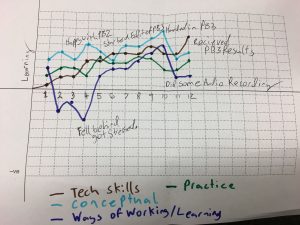Footy fans attention drawn to the sights & sounds of the red centre
I was riding my bike towards East Richmond Railway Station when I went past a stunning portrait of an Indigenous boy in a Hawthorn jumper. I put on the breaks and wheeled around to study the image further. He’s barefoot, standing on red earth, holding a yellow Sherrin, and has a determined gaze that exudes dignity.
The photo is part of a photographic exhibition called “Red Earth Footy”, featuring images taken by local photographer Adam Haddrick. I walked into the gallery and see images of grown Indigenous men playing Australian Rules football. There are action shots, portraits and some quite evocative close-ups.
One image shows a long shot of a group of footy players. They’re scrambling for the ball in a cloud of dust at sunset. The plumes of red dust, and the setting sun create an illusion that could just as easily be described as a company of graceful dancers, carefully choreographed around a roaring fire. Very similar to Bangarra Dance Theatre.
A man introduced himself as Adam the photographer. He told me that he took the photos about 300ks west of Alice Springs. It was originally for a newspaper shoot, but he has returned many times since, and is now working on a book. Adam told me that the footy plays a vital role in the Indigenous community he visited; the different teams travelled vast distances to meet, camp, socialise and compete. He said that the rivalry between these teams equals that of any AFL team, and that the brand of footy they play is very rough, and the ground they play on is even harder.
In the background Adam had an ambient soundscape playing on loop, which he recorded it with his phone. It sounds fantastic and really adds to the atmosphere. You can hear a footy crowd enjoying the game, the players running and kicking and the constant hum of a generator that I didn’t think to ask what it was powering. All of this gave me some ideas for my own group project, which is focusing on modes of attention and AFL;
With that in mind, I asked Adam how he felt going to the MCG after experiencing footy in such a remote part of the world. He said that the players and spectators aren’t that different; there are hard men, thrilled kids and proud mums. The only thing he says that is blatantly different is the level of commercialism in the AFL. But these leagues in outback Australia are supported financially by the AFL, so he thinks that’s money well spent.



